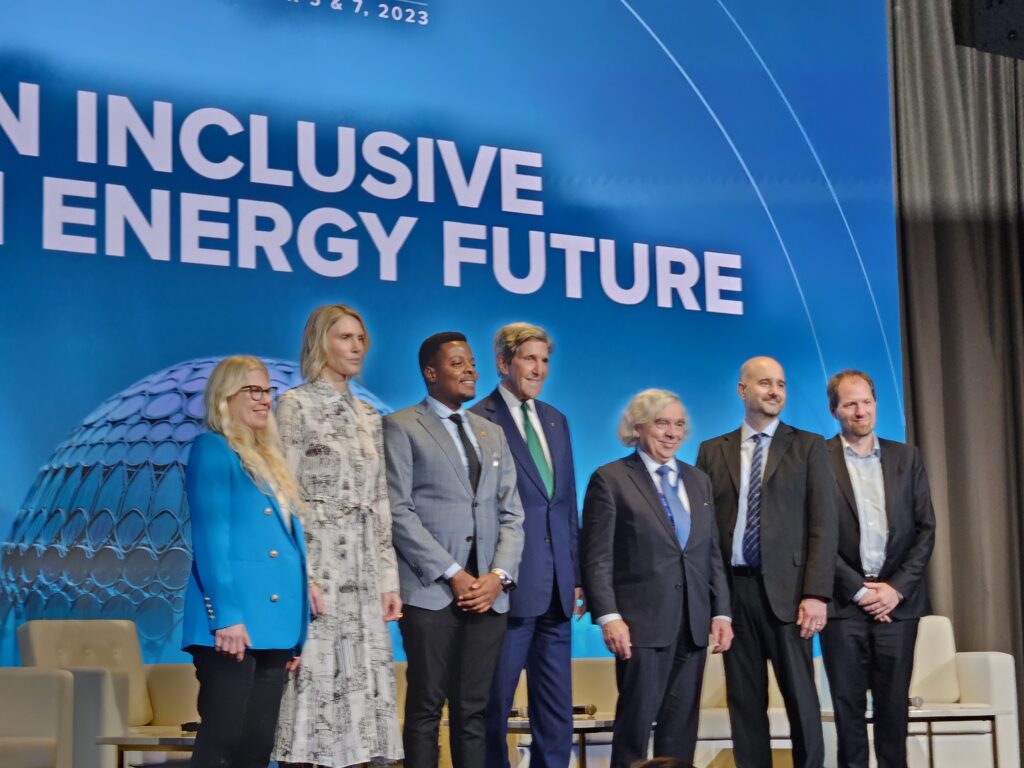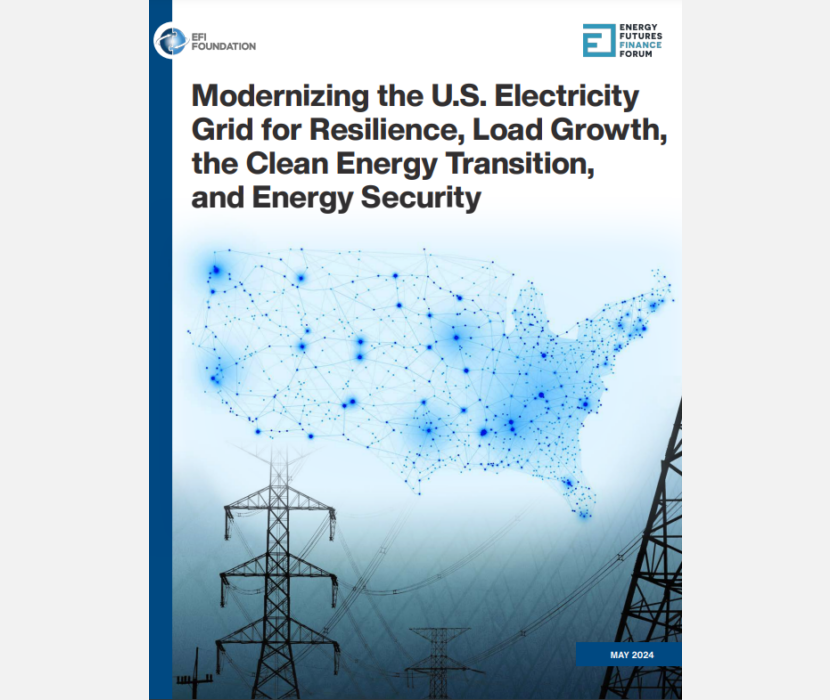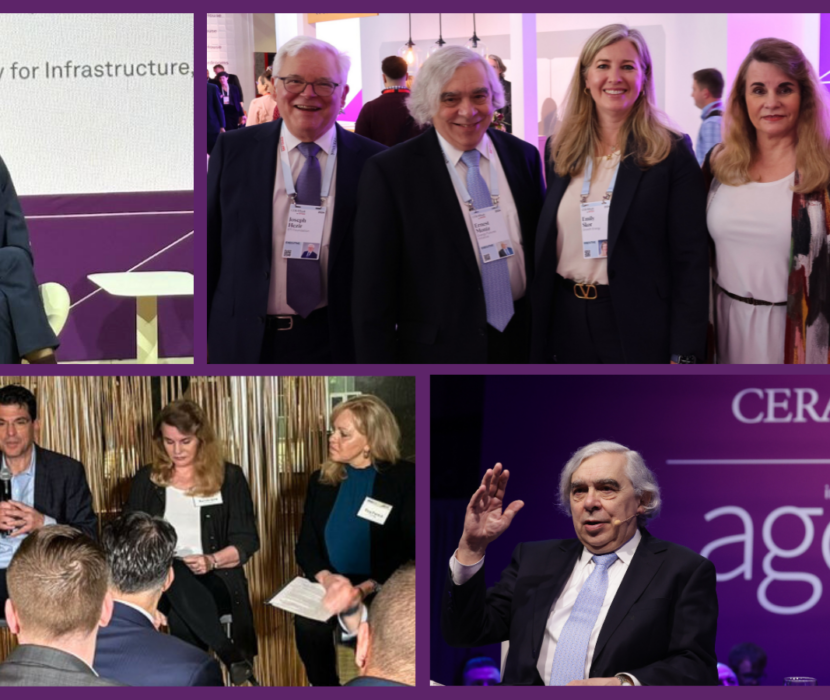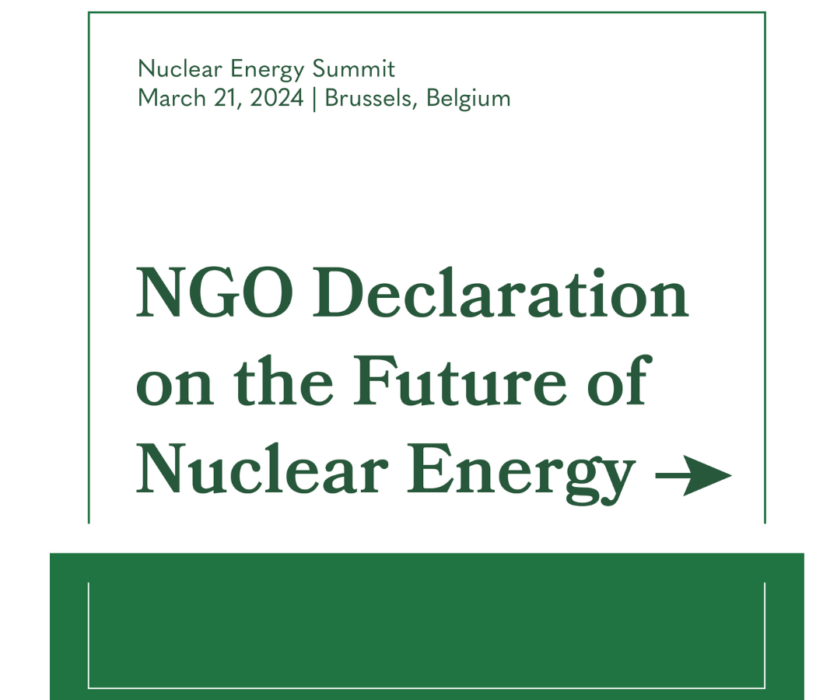
Speakers/panelists (left to right): Michelle Patron (Microsoft), Gabriella Hearst (fashion designer), Humphrey Mrema (Youth Survival Organization, Tanzania), John Kerry (U.S. Special Presidential Envoy for Climate), Ernest Moniz (EFI Foundation), Costa Samaras (White House Office of Science and Technology Policy), Bob Mumgaard (Commonwealth Fusion Systems)
This piece is one of several covering thought leadership from Ernest Moniz at COP28 in December 2023 in Dubai, United Arab Emirates. It was originally posted on April 19, 2024, but it is now in chronological order of when the event occurred.
Nuclear fusion energy, often considered a perpetual pipe dream decades away from reality, is now being pursued at an intensified pace as a potential breakthrough technology to help combat climate change. That was the resounding message at a high-profile panel discussion, titled “Advancing International Partnerships for Fusion Energy Commercialization,” at the COP28 climate summit in December 2023.
The panel discussion was moderated by Ernest Moniz—CEO of the EFI Foundation and former U.S. Energy Secretary under President Obama—and it brought together leaders from various sectors to chart an international roadmap for fusion’s development and commercialization. The panel was part of an Atlantic Council event hosted in the Green Zone at COP28.
Moniz admitted he was previously a skeptic about fusion’s viability. However, he said his perspective has changed upon witnessing an influx of more than $5 billion invested in fusion in recent years.
“The $5 billion of private capital, to me, says somebody must think this has got a good chance of working,” Moniz stated. “And I think that’s what’s really brought us all together here.”
He expressed optimism that within this decade, “there is a very high probability that certainly the conditions for sustained fusion will be demonstrated” in laboratories and pilot projects.
Achieving sustainable fusion reactions on an industrial scale—which replicates the same process that powers the sun—would represent a game-changing breakthrough. It would provide a source of unlimited baseload electricity without greenhouse gas emissions or long-lived radioactive waste from the fusion process itself.
“Make no mistake about it—with success, this is truly a game changer,” Moniz said of fusion’s potential impact.
Moniz’s panel discussion was preceded by opening remarks from John Kerry, U.S. Special Presidential Envoy for Climate. Kerry announced the Biden administration’s international engagement plan, which focuses on fostering greater global collaboration across five key areas to help realize the promise of fusion energy.
“Fusion has actually benefited greatly from a strong tradition of international collaboration,” Kerry said. “We cannot realize this grand ambition—perhaps not at all, but certainly not at the pace we need to—by doing it alone.”
The ambitious international plan aims to accelerate fusion breakthroughs by facilitating measures including shared test facilities, public-private partnerships, common regulations, workforce training initiatives, and aligned investment priorities across nations.
The panelists also spoke about what is needed for fusion advancements.
“We have to do it all at the same time,” said Costa Samaras from the White House Office of Science and Technology Policy. “Just like a computer, we can’t wait to build up the global supply chain and wait to build up a diverse workforce. We have to do them in parallel to accelerate the promise of fusion energy.”
Major corporations are expected to be among the key future customers for fusion power as they transition towards achieving 100% carbon-free electricity across operations. Microsoft is one of the world’s largest corporate buyers of renewable energy, having contracted for 19 gigawatts of capacity since 2013.
“We need a multi-technology approach,” said Michelle Patron, Microsoft’s Director of Sustainability Policy. “We need to continue to invest in solar, wind, storage, geothermal, but also need to include these advanced carbon-free technologies like fusion.”
Humphrey Remia, Chairman of the Youth Survival Organisation from Tanzania, injected a dose of reality from the perspective of developing nations. These nations are still struggling to achieve reliable baseload electricity access for substantial portions of their populations.
“When you come to me and say we need electric motorbikes, electric cars, it is something which is impossible to realize,” Remia stated bluntly. “We need technology, we need capacity building, and we need financial resources.”
Despite the numerous challenges ahead, there was palpable excitement and optimism about fusion’s potential among the diverse array of panelists and stakeholders.
Fashion designer Gabrielle Hearst, a passionate advocate for sustainable fusion energy, perhaps best captured the prevailing sentiment: “I really feel that there’s hope here … I’ll be the cheerleader that you need when you have to get to that race and be like, you need to do this guys. We need you.”
The COP28 climate summit has elevated fusion’s prominence on the world stage and is leading it to be seriously considered as a solution to mitigate climate change and achieve global decarbonization goals.
“What you can see is the incredible optimism and the incredible importance attached to the kind of breakthrough game-changer [of nuclear fusion],” Moniz said, adding that this breakthrough “could be very much closer than is generally acknowledged.”
-Dan Selby, Communications Intern
(Share this post with others.)




